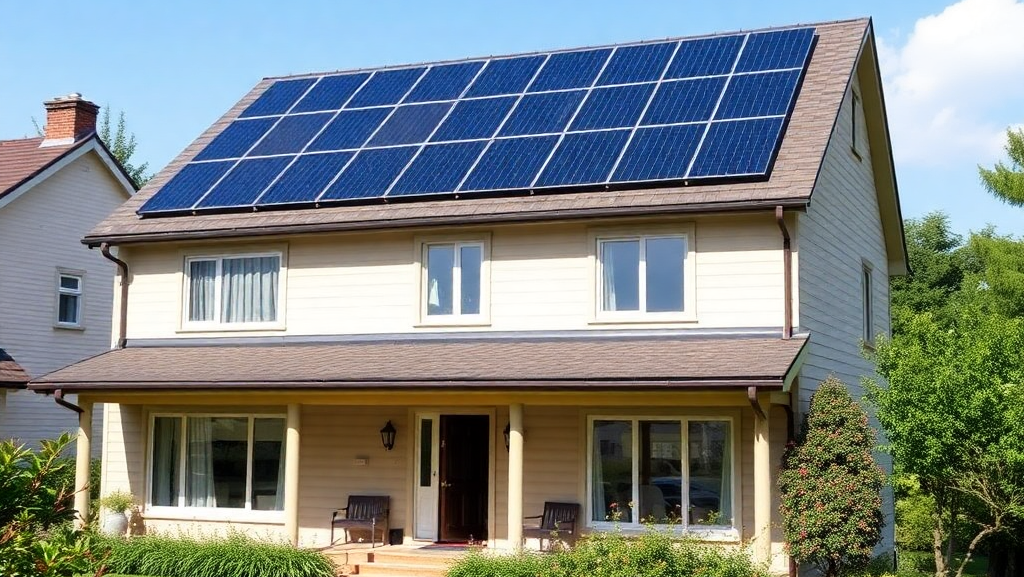Key Considerations for Integrating Solar Panels into Energy Storage Systems
Compatibility Between Solar Panels and Storage Components
Voltage and Current Matching for Efficient Charging
Solar panels must align with the input specifications of energy storage systems to prevent inefficiencies. For instance, a 24V solar panel array requires a charge controller and battery bank rated for 24V DC input. Mismatched voltages can lead to overheating in charge controllers or incomplete battery charging, reducing system lifespan. Use maximum power point tracking (MPPT) charge controllers to optimize voltage conversion, especially in systems with varying sunlight conditions.
Battery Chemistry Selection Based on Application Needs
Lead-acid batteries are cost-effective for short-term storage but require regular maintenance and have limited cycle life. Lithium-ion batteries offer higher energy density and longer lifespans but are sensitive to temperature extremes. Flow batteries, such as vanadium redox types, suit large-scale applications with frequent charge-discharge cycles. Choose a chemistry that balances cost, durability, and performance for the specific environment (e.g., lithium-ion for residential systems in moderate climates).
Inverter Compatibility with Solar and Storage Output
Hybrid inverters manage both solar panel input and battery output, simplifying system design. Ensure the inverter’s power rating exceeds the combined load demand and solar generation capacity to avoid overloading. For example, a 5kW inverter should support at least 4kW of solar input and 3kW of continuous load. Grid-tied inverters must comply with local utility regulations for safety and interconnection standards.
System Design and Installation Best Practices
Sizing Storage Capacity Relative to Solar Generation
Calculate energy storage needs based on daily consumption patterns and solar output variability. A system in a sunny region might require 1–2 days of autonomy (battery capacity to cover usage without solar input), while cloudy areas need 3–5 days. Over-sizing batteries increases upfront costs but reduces reliance on the grid during outages. Use historical weather data to model seasonal variations in solar generation and adjust storage capacity accordingly.
Thermal Management for Battery Efficiency
Batteries lose capacity in extreme temperatures. Install lithium-ion batteries in climate-controlled enclosures to maintain temperatures between 15–30°C. For outdoor installations, use passive cooling (e.g., shaded vents) or active cooling systems (e.g., fans) for lead-acid batteries. Insulate battery banks in cold climates to prevent freezing, which can damage cells. Monitor temperature sensors to trigger alerts if thresholds are exceeded.
Wiring and Electrical Safety Protocols
Use cables rated for the system’s voltage and current to minimize resistance and heat buildup. For example, a 48V system with 50A current requires at least 8 AWG copper wiring. Follow national electrical codes (NEC) for grounding, conduit sizing, and overcurrent protection. Install disconnect switches near solar panels, batteries, and inverters for safe maintenance. Label all components and circuits to simplify troubleshooting and compliance inspections.
Performance Monitoring and Maintenance
Real-Time Data Tracking for System Health
Deploy monitoring software to track solar generation, battery state of charge (SoC), and energy consumption. Set up alerts for abnormal conditions, such as a sudden drop in solar output (indicating panel shading or failure) or rapid battery discharge (suggesting a faulty load or inverter). For example, a 10% drop in daily solar generation over a week may signal soiling or degradation.
Battery Maintenance Schedules
Lead-acid batteries require monthly checks for electrolyte levels and specific gravity readings. Equalize charges every 3–6 months to balance cell voltages and prevent sulfation. Lithium-ion batteries need less maintenance but should be stored at 40–60% SoC if unused for extended periods to prolong lifespan. Flow batteries require periodic electrolyte replacement and pump maintenance. Follow manufacturer guidelines for cycle counts and replacement intervals.
Optimizing Charge-Discharge Cycles
Avoid deep discharges (below 20% SoC for lithium-ion, 50% for lead-acid) to prevent capacity loss. Program inverters to prioritize solar charging during peak sunlight hours and limit battery usage to nighttime or cloudy periods. For off-grid systems, use load-shifting strategies (e.g., running high-power appliances during solar generation) to reduce battery strain. Implement time-of-use (ToU) tariffs in grid-tied systems to charge batteries during low-rate periods and discharge during peak rates.
Environmental and Regulatory Compliance
Weatherproofing for Outdoor Components
Solar panels and charge controllers must withstand local weather conditions. Use IP65-rated enclosures for outdoor electronics to protect against dust and water ingress. In coastal areas, apply anti-corrosion coatings to metal components exposed to salt air. Elevate battery banks above flood levels in flood-prone regions to prevent water damage.
Permitting and Grid Interconnection Requirements
Check local regulations for permits before installing solar-storage systems. Grid-tied systems often require utility approval and interconnection agreements to ensure safety and compliance with voltage/frequency standards. Some jurisdictions mandate battery systems to include anti-islanding protection to prevent backfeeding during outages. Document all installations and inspections to facilitate future resale or insurance claims.
End-of-Life Recycling and Disposal
Solar panels and batteries contain materials that require specialized recycling. Partner with certified recycling facilities to handle decommissioned components. For example, lithium-ion batteries can be recycled into new batteries or industrial materials, while lead-acid batteries are smelted to recover lead and plastic. Track recycling certificates to verify compliance with environmental regulations and reduce landfill waste.
By addressing these factors—from component compatibility to end-of-life management—solar-storage systems can achieve optimal performance, reliability, and sustainability across diverse applications.


